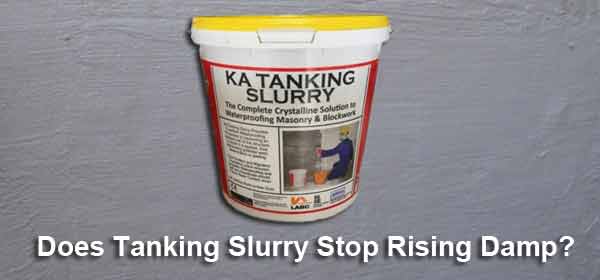The DIY Fix is reader supported. When you buy after clicking a link on our site, we may earn an affiliate commission.
Rising damp occurs when water rises from the ground below and enters your property. This can happen in any structure, including:

- Your home
- A garage or shed
- A commercial premises
The moisture travels up through the capillaries in your foundations and is usually stopped from rising any further by a damp-proof course (DPC). However, if the DPC fails, damp can continue to rise and enter the building above.
Most homes in the UK are sat on strip foundations. In this case, the DPC will be placed in a mortar joint above external ground level. This is usually around 1-2 bricks from ground level outside, and below internal floor level.
The other common type of foundation is a raft foundation, this is a reinforced concrete slab that sits under the entire building.
Also in smaller structures, such as sheds, you may just have a simple concrete slab.
Whichever foundation is present there will usually be some form of DPC to stop damp rising. However, over time any of these can fail and result in rising damp.
So, Will Tanking Slurry Stop Rising Damp?
Tanking slurry can be a good way to stop rising damp. The slurry is a cement based waterproof coating, that can be applied to surfaces. Once the slurry dries, it creates a completely watertight coating that will stop water ingress.
It is a very popular solution to stop damp in basements, garages, and homes.
However, it is important to remember that the slurry only blocks water from penetrating. It is not fixing the underlying cause of damp. Because of this, there are many instances where tanking slurry should be used in conjunction with other damp treatments.
Is tanking slurry the best solution for rising damp?
Tanking slurry can be a great way to stop damp, but it is certainly not a one size fits all solution. For example, if you have moisture rising through a concrete slab in your garage, then it could be a good option.
However, if you have rising damp present on the walls inside a family home. It probably isn’t the best solution on its own.
When damp is rising through the walls in your home and breaching your DPC, you should first repair the actual problem. This will usually be a failed DPC, allowing water to travel upwards.
There are several solutions to this, but one of the most popular modern methods, is using an injectable DPC cream, or damp proofing rods.
Both are a low-cost, effective solution to repairing/replacing your existing damp proof course.
Once the rising damp is repaired, you will usually need to re-plaster internally. At this point tanking slurry could be used as an extra level of protection, before re-plastering and decorating.
Another time slurry could be a good option, is when you are tanking a basement. There are some methods of basement tanking that are much more complicated and expensive. However, if the damp is minor, then tanking slurry can be a highly effective low-cost option.
It really will depend on a job-by-job basis whether tanking slurry is the best solution.
Click here to see how I successfully converted a single skin outdoor toilet and bin store. This was turned into a completely watertight outdoor office, using tanking slurry.
Can tanking make damp worse?
Whilst tanking slurry is a great product, it does have some potential downfalls. Its main function is to provide a completely waterproof barrier. This means, it is not breathable and is prone to condensation. Especially when applied to a cold surface.
It is also not ideal to patch small areas. For example, if you have rising damp appearing in one specific area and you apply tanking slurry, in only that area. It is highly likely that the damp will find another route into your property.
Therefore, it works better for larger jobs, such as entire basements (walls and floors). Or a garage or shed where you would also apply across entire surfaces.
In these cases, the tanking slurry acts as a complete barrier and will not allow the moisture to travel any further. Plus, because there are no gaps in the coverage, moisture can not work around and find another route inside.
Also, in situations with large amounts of water ingress, tanking slurry may not be your go-to solution. For example, if you have a basement that is taking on a lot of water, tanking slurry may not be the best option.
Even if it takes to the surfaces well and solves the problem, this may only be temporary.
If there is a large amount of water build up behind the surface, this could cause the slurry to blow. This happens because the slurry is non-breathable, so the pressure builds, which eventually forces the tanking off the wall.
In this situation you may need to consider a more complex tanking strategy. Click here to learn more about cellar tanking.
What to do if you’re not sure?
The use of tanking slurry is highly dependent on the individual situation. This means without industry knowledge or a lot of research, it can be confusing whether tanking is the best option.
If in doubt, you should always get advice from a professional. The good news is most damp proofing companies will offer a free survey to find the best solution.
Once the survey is complete, you can decide whether you hire them, or do the work yourself.
You can also get multiple opinions and quotes by using a damp proofing comparison site.
These sites put you in touch with local rated damp professionals and you can save quite a bit of money this way.
To see how much you could save on local damp proofing click here



